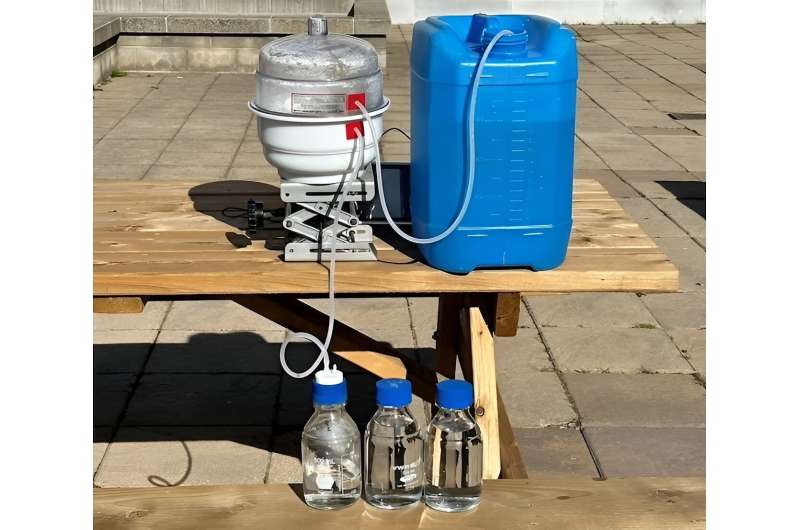Researchers from the University of Waterloo have developed an innovative, energy-efficient device that uses solar power to convert seawater into freshwater. Inspired by nature, the new technology could be a game-changer for coastal and island communities facing water shortages.
Desalination—removing salt from seawater to produce fresh water—is vital in regions where clean water is scarce. According to the UN’s 2024 World Water Development Report, around 2.2 billion people globally lack access to clean water. While current desalination systems help, they often require large amounts of energy and regular maintenance, as salt buildup can clog the equipment.
The team at Waterloo designed a solution that mimics how trees move water from their roots to their leaves. This solar-powered device continuously removes salt and produces freshwater, all without the need for frequent maintenance. Their findings were published in Nature Communications.
“Our design takes cues from nature,” said Dr. Michael Tam, a Waterloo’s Department of Chemical Engineering professor. “We’ve created a system where water evaporates and condenses in a closed cycle, preventing salt from building up and maintaining efficiency.”
Powered by solar energy, the device converts 93% of sunlight into usable energy—five times more efficient than existing desalination systems. This impressive efficiency can produce around 20 liters of fresh water per square meter per day, meeting the World Health Organization’s daily water needs for drinking and hygiene and inspiring confidence in its potential.
The key to this breakthrough lies in the materials used. The team created the device with nickel foam coated in a special conductive polymer and thermoresponsive particles. These materials capture sunlight across the spectrum, generating heat and evaporating saltwater. The system works similarly to how water naturally moves through trees, and excess salt is pushed to the bottom of the device, keeping it clear for continuous use.
Dr. Yuning Li, another professor from Waterloo’s Department of Chemical Engineering, explained that the device’s portability and sustainability make it ideal for remote regions with limited freshwater access. “This technology offers a reliable and sustainable solution to the growing global water crisis,” she said, instilling confidence in the device’s potential.
The research team plans to build a larger prototype to test the device at sea. If successful, the technology could be a sustainable source of freshwater for coastal communities, bringing hope and optimism to these regions. It could also significantly contribute to global sustainability efforts, including several UN Sustainable Development Goals.
Source: Techxplore.com


